| . |
 |
| Primula vulgaris |
Primrose
|
|
|
|
|
|
|
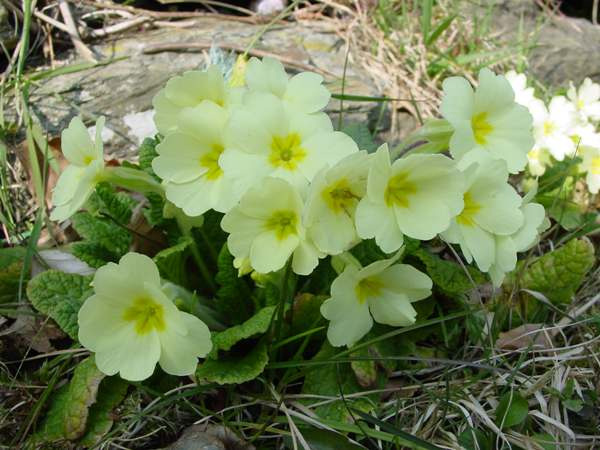 . . |
| One of the first wildflowersof springtime, the Primrose is a real favourite with gardeners too. |
| . |
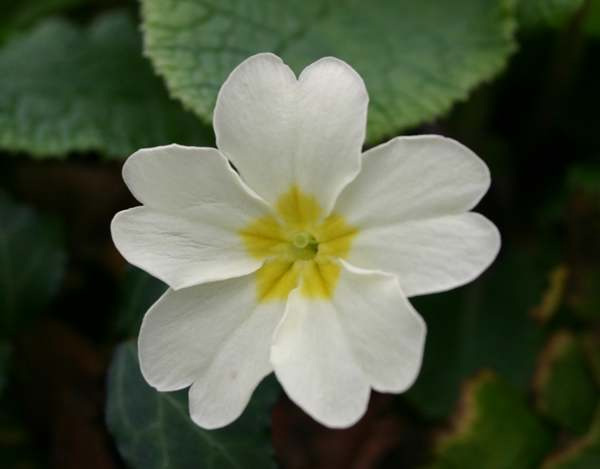 |
Description
|
| A perennial, the Primrose produces neat hemispherical clumps typically 10 to 25 cm tall. The rosette of basal leaves is often visible right through the winter except in exposed locations. The short-stemmed leaves can grow to 20cm or so in length, and their wrinkled surfaces and crinkly or slightly toothed margins are quite distinctive.Flowers, each with five notched petals, are typically 2 to 4cm in diameter, pale yellow with a deeper yellow or orange-yellow centre, and slightly scented. Each flower is usually borne singly on a slender stem. Flowers may have a long prominent style, as shown above, in which case they are known as pin flowers or pin-eye flowers; or the style may be shorter and the stamens most prominent – an example is shown below – when they are referred to as thrum flowers or thrum-eye flowers. |
| . |
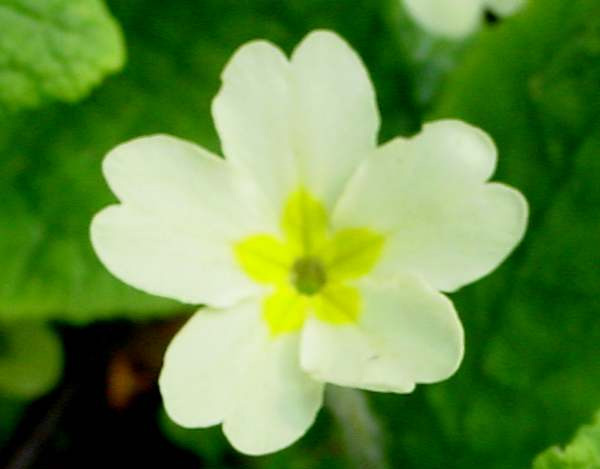 |
| . |
| Pollination |
| Primrose flowers are hermaphrodite. Fertilisation is usually achieved between a thrum-eye flower and a pin-eye flower; pollination from pin to pin or thrum to thrum is not generally effective. Most of the flies of early spring are very small and tend to go unnoticed, but they have no difficulty finding Primroses and helping with their pollination. |
| Blooming times |
| In mild winters, Primroses can appear before Christmas in southern Britain, but they are usually at their best in March and April and continue blooming well into May or early June.) |
| . |
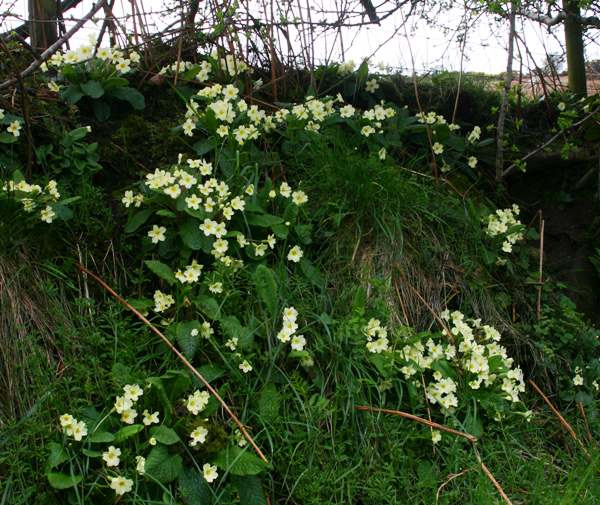 |
Habitat
|
| These lovely perennial wildflowers favour heavy clay soils and damp shady habitats; as a result they are most abundant in broadleaf woodlands and beneath hedgerows; indeed, you will often find these shallow-rooting plants in greatest abundance at the edge of a wood or on a tree-lined riverbank where they receivesome light but the surface soil never dries out completely. Where the grass is not cropped too closely Primroses can carpet large areas of motorway embankments and sloping damp meadows . (Steep slopes are usually spared when artificial fertilisers are spread, and so the wildflowers are less likely to be crowded out by rank vegetation.) |
| . |
| Uses |
| In the past Primrose were thought to be a powerful medicine for treating painful conditions such as muscular rheumatism, paralysis and gout; the leaves were used to dress wounds; and the flowers are considered edible and were once popular in the dish known as Primrose Pottage. An infusion of the petals makes Primrose Tea.We strongly advise against eating or using as medicines any plants without first obtaining qualified professional advice. |
| . |
|
|
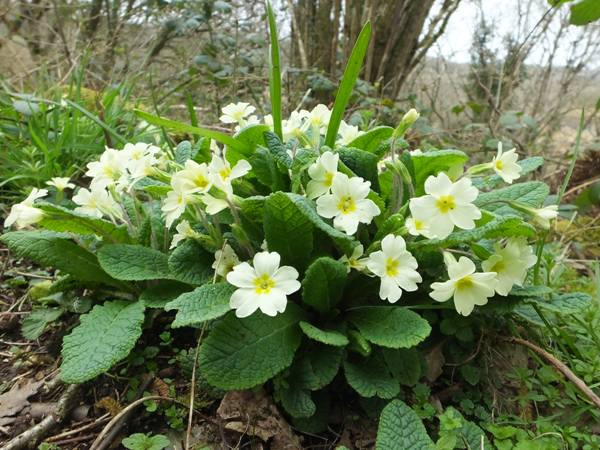 . . |
Hybridisation
|
| Primroses hybridise readily with Cowslips and other members of the Primula genus. A very common sight in the wild where both Cowslips and Primroses grow is the False Oxlip, often wrongly identified as Primula elatior, the true Oxlip which in Britain is found only locally in south-east England.In the picture above, taken at the edge of a steeply-sloping field in Pembrokeshire, west Wales, Primroses and False Oxlips are growing side by side; however, Cowslips were also seen nearby. |
| . |
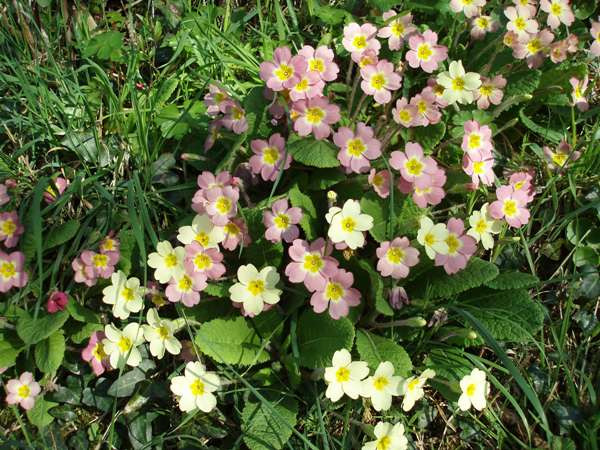 . . |
|
| Thanks to www.first-nature.com for the information on this species |
| . |
| This page is sponsored by:- |
| GROWN IN THE UK |
 |
| . |
| Do you want to grow your own ? |
 |
| . |

|
 |
|

 .
.


 .
. .
.

